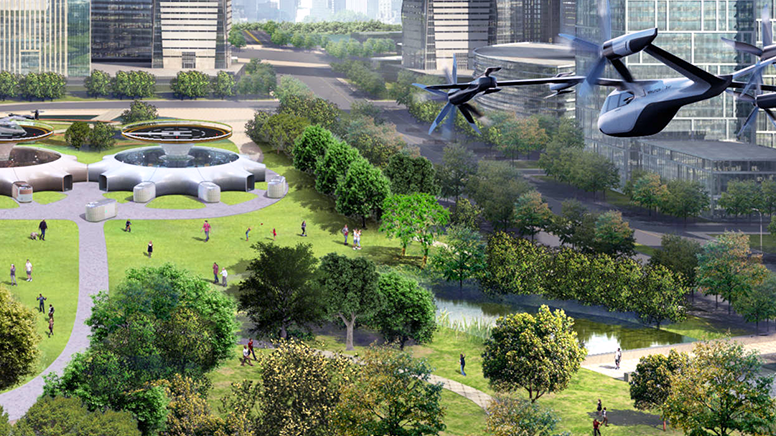Hyundai aims to free future cities and people from constraints of time and space and allow them to create more value in their lives.
Hyundai Motor Company has unveiled its innovative vision for urban mobility at CES(Consumer Electronics Show) 2020, for vitalizing human-centered future cities. Based on these mobility solutions, Hyundai aims to free future cities and people from constraints of time and space and allow them to create more value in their lives.

To envision this future, Hyundai Motor showcased three mobility solutions for the future – Urban Air Mobility (UAM), Purpose Built Vehicle (PBV), and Hub, a place for mobility transfer and community activities. UAM is a new form of mobility utilizing air space to drastically reduce transit time. PBV is self-driving urban mobility allowing personalization to cater to diverse lifestyles. People can use PBVs as their private lounge, or sometimes the means of public transportation.

Hub is a space that connects UAM and PBV, a new concept solution in which people can come together to interact. Just as Hyundai Motors revealed a Youtube video on 8th this month, working closely together, UAM, PBV, and Hub play key roles in vitalizing human-centered future cities and enriching people’s lives. With this smart mobility vision built around the UAM-PBV-Hub network, Hyundai has outlined its commitment to provide customers seamless mobility and differentiated mobility experience. On the next day, Hyundai released another video that shows how to utilize Hub and PBV. Let’s watch the two videos.

The first video talks about Hub. It is a round-shaped building with a warehouse/repair & utility room on B2, sanitary/emergency shelter on B1, a Skyport for UAM on the top, and 10 docking stations for PBV to get connected with the Hub. People who took UAM can take an elevator to get into the Hub or just pass through a glass door if you took PBV.

The PBV is a new urban mobility solution that can accommodate a wide spectrum of future lifestyles with limitless personalization, which would make Hyundai’s Style Set Free strategy a reality. Upon personalization, PBVs can function as a restaurant, coffee shop, and hotel, or even a clinic and pharmacy, in addition to being an urban shuttle. Hyundai’s concept PBV will make our lives change drastically, and the Hub highlights this change.

The video points out that Hubs can work as urban international Airports. It it because that the UAM, using an electric motor, is quiet and environmentally friendly enough for city residents.

According to the second media video, the PBV is highly customizable with complete disassembly of upper- and underbodies and adjustable size from 4 to 6 meters. Its interior can be personalized to individual needs by assembling modular parts, taking the PBV beyond transportation into the realm of living space. The fully-electric PBV is also an environmentally-friendly mobility solution.



PBV uses 16 electric hardware ball type wheels, which allow PBVs to move freely. Using an electric motors, on the roof of the PBV are Solar panels to charge a battery. PBV can also navigate along the best routes and charge in-transit with the help of the charger PBVs.

The video also shows PBVs’ feature – platooning – allowing it to navigate along the best routes and charge in-transit with the help of the charger PBVs. Ans this is only possible because the PBVs can travel autonomously in a platoon. It is a method for driving a group of vehicles together. It is meant to increase the capacity of roads via an automated highway system, just as the video shows naturally. This is expected to bring innovative changes to personal deliveries, as well support the wider logistics industry within future cities.


PBV is not just for transportation. An air purifier system is mounted on the ceiling. Also, the inner and outer wall of PBV can work as a digital screen called Interactive Media Wall, interacting with other PBVs or displaying information.

With self-driving and eco-friendly electric technologies, PBVs will have multiple forms and features based on how are we going to use them. Just the categories are – public transportation, multi-purpose space, medical services, residential spaces, pop-up stores (food trucks), and wireless charging. And, by the time we use PBV, there will be more categories.

The company will overcome the mobility limitations of time and space and create new spaces where people can gather and interact to help build and vitalize human-centered future cities. The Hub concept of Hyundai Motors demonstrates how UAMs and PBVs can come together to form a new community for future city residents.
WATCH: Hyundai at CES 2020
